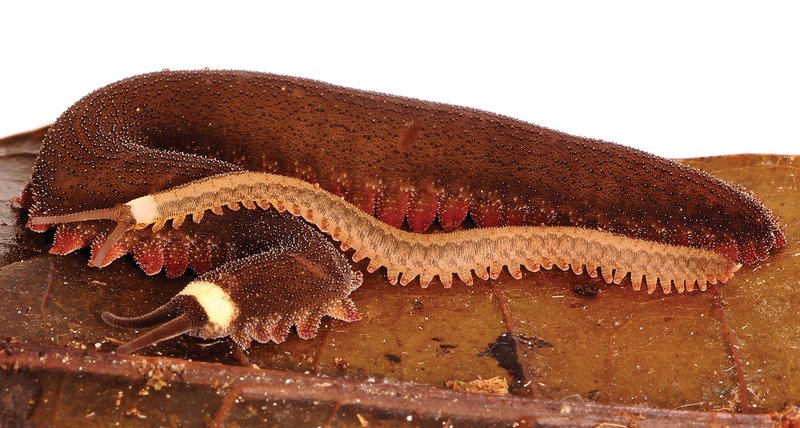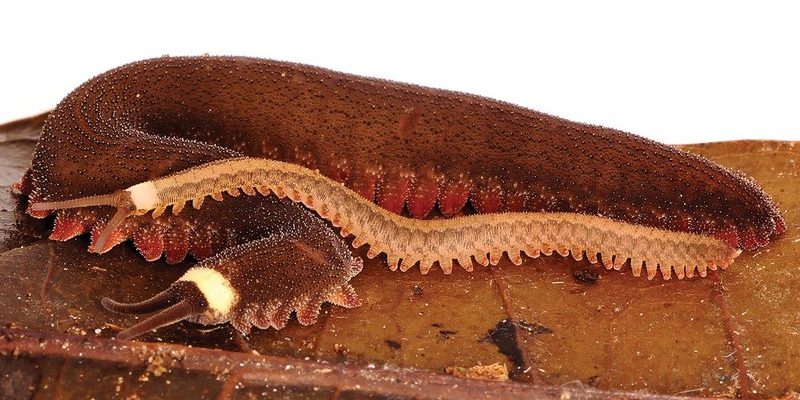
Now, why should we care about these little guys? Well, velvet worms hold clues about our planet’s evolutionary history and the environments they thrived in. Their fossil records tell stories of ancient ecosystems and survival strategies that have helped them adapt through millions of years. In this article, we’ll dive deep into the intriguing world of velvet worm fossil records and what they reveal about prehistoric survival.
What Are Velvet Worms?
To appreciate velvet worm fossil records, it’s important to know what velvet worms actually are. Known scientifically as *Onychophora*, these creatures live in warm, moist environments, mainly in tropical and subtropical regions. They can be described as a kind of “living fossil” because their anatomy has changed so little over millions of years.
Velvet worms are soft-bodied and covered in tiny, hair-like structures, which is where they get their name. These fascinating creatures hunt using a unique method; they spray a sticky, gooey substance on their prey, which helps them capture unsuspecting insects. Just imagine being a tiny bug, minding your own business, when suddenly this squishy critter sprays you into a sticky trap!
So, how do we know so much about the ancient history of velvet worms? That’s where fossil records come in.
The Importance of Fossil Records
Fossil records are like windows into the past, showcasing lifeforms and environments that existed long before humans walked the Earth. Simply put, these records can tell us about the habitats, behaviors, and even diets of ancient organisms. For velvet worms, fossil discoveries illuminate not only their survival but also how they’ve adapted over time.
Research has shown that the fossilized remains of velvet worms date back to the Cambrian period, over 500 million years ago. That’s an incredible timeline! This means they’ve been around longer than many other animal groups. Such longevity suggests these creatures have found effective ways to adapt and thrive in various environments, dodging extinction events that wiped out many of their relatives.
Moreover, fossil records highlight the diversity within the velvet worm lineage. By examining fossils, scientists can track how different species evolved, perhaps in response to climate changes or ecological shifts over time. It’s almost like piecing together a family tree but for ancient creatures!
How Velvet Worm Fossils Are Formed
Fossils don’t just appear out of nowhere; there’s a whole process behind them. When a velvet worm dies, its body can become buried under sediment in mud or sand. Over millions of years, this sediment compresses and turns into rock, gradually preserving the soft body of the velvet worm. It’s a bit like making a sandcastle that hardens over time, keeping the shape just as it was.
The conditions need to be just right for fossilization to happen. The velvet worm must be buried quickly to prevent decay or scavenging. This means they’re more likely to fossilize in serene, protected environments—like forest floors or riverbeds—where sediment builds up steadily. Fossilization is rare but when it occurs, it offers scientists priceless snapshots of ancient ecosystems.
Interestingly, some fossilized velvet worms show distinct features that differ from today’s species. These differences provide crucial insights into how these animals have adapted to changing climates and environments over millions of years.
Insights from Velvet Worm Fossils
Studying velvet worm fossils offers incredible insights into prehistoric life. One major takeaway is their ecological role in ancient ecosystems. These little hunters likely occupied a vital niche, helping control insect populations, just as they do today. By analyzing their fossils, scientists can infer what types of plants and animals lived alongside them, creating a fuller picture of their habitats.
Moreover, researchers have discovered that velvet worms were part of diverse communities. Fossils have been found alongside other prehistoric creatures, which suggests they were important members of their ecosystems. Understanding this context is like connecting the dots in a larger puzzle of life during that epoch.
Another fascinating aspect is seeing how velvet worms have managed to survive despite massive environmental changes. Their ability to thrive in various conditions hints at their resilience, giving clues about how modern creatures might endure the ongoing challenges posed by climate change.
Modern Velvet Worms and Their Evolutionary Journey
Fast forward to today. Modern velvet worms are quite similar to their ancient ancestors, showing how successful their evolutionary strategies have been. They still prefer humid environments and remain under the radar of most people, which is part of their charm.
These creatures have also adapted to different environments around the world. From tropical rainforests to temperate regions, they’ve carved out niches in various ecosystems. The fact that they’re still around after all this time speaks volumes about their adaptability.
Interestingly, some researchers are looking into how modern velvet worms can help us understand evolutionary biology. Their unique features and survival mechanisms provide insight into how creatures can thrive through changing conditions—something that’s increasingly relevant in today’s warming world.
Why Velvet Worms Matter to Us Today
You might be wondering why we should care about velvet worms and their fossil records. Well, they’re much more than just quirky creatures! Studying them helps us understand evolutionary history and the resilience of life. As we face challenges brought on by climate change, their ability to adapt and survive can offer valuable lessons.
Additionally, velvet worms are indicators of environmental health. Because they thrive in specific conditions, their presence in an ecosystem can signal that the habitat is doing well. If conditions change and they begin to disappear, it’s a warning sign for the ecosystem as a whole.
By looking at velvet worms, we can appreciate the complex tapestry of life on our planet, understanding that every creature, no matter how small, plays a role. Their story is one of perseverance through time and change—an inspiring reminder of nature’s resilience.
Velvet worms might not be the first creatures that pop into your head when you think of prehistoric life, but they’re certainly some of the most fascinating. Their fossil records tell us not only about their long-standing presence on Earth but also about the environments they’ve navigated and the challenges they’ve overcome. By exploring their history, we gain valuable insights into the delicate balance of ecosystems and the importance of adaptation and survival.
Next time you hear someone mention these curious little critters, you can share a bit about their incredible journey through time. Velvet worms remind us that even the smallest creatures have significant stories to tell—stories worth listening to.

